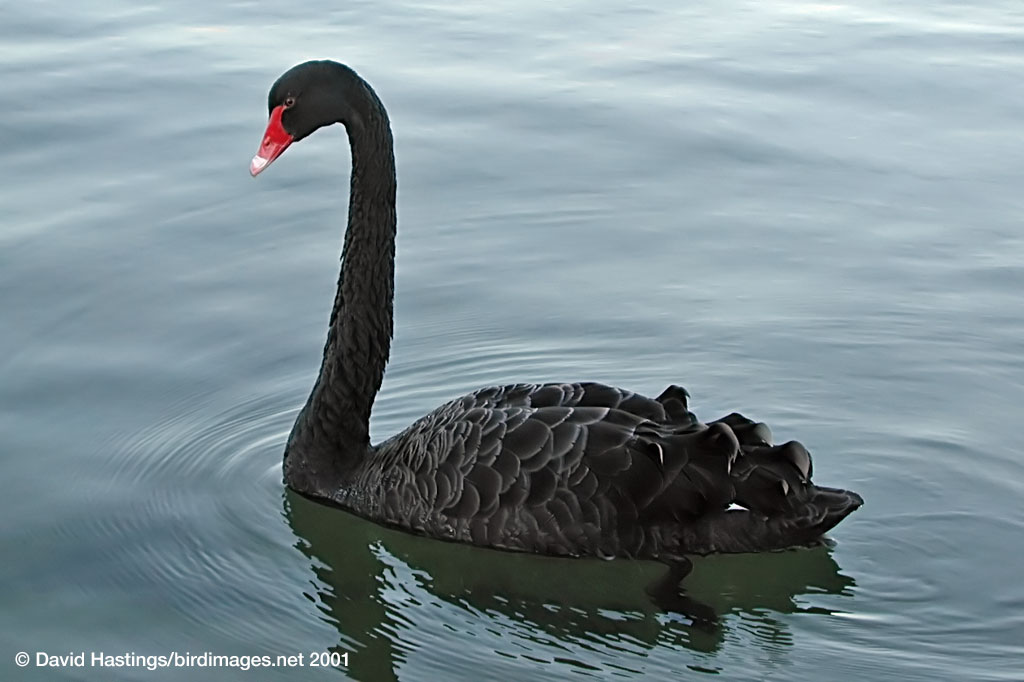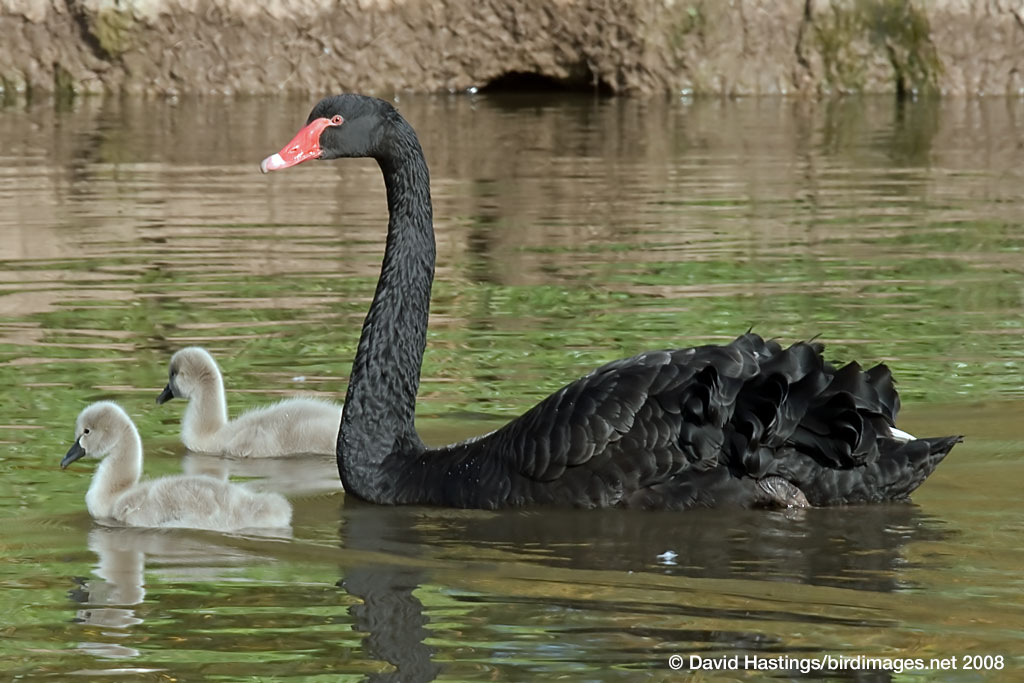Black Swan (Cygnus atratus) | Species | ||||||||||||||||||||||||||||
Taken at Lake Rotorua, New Zealand on November 17th 2001. (© David Hastings) (Click image for larger version. Click image for larger version) Adult with cygnets. Taken at Slimbridge, Glos on October 17th 2008. (© David Hastings) (1/250th sec at f13. Click image for larger version) DescriptionL: 110 - 140cm; WS: 160 - 200cm Black Swans are mostly black feathered, with a line of white flight feathers of the wing edges that sometimes show when at rest, and are conspicuous in flight. The bill is bright red, with a pale bar and tip; and legs and feet are greyish-black. Cobs (males) are slightly larger than pens (females), with a longer and straighter bill. Cygnets are a greyish-brown with pale-edged feathers. A mature Black Swan weighs 6-9 kg. In flight its neck is long and curved like an 'S'. The Black Swan is common in the wetlands of south western and eastern Australia and adjacent coastal islands. In the south west the range ecompasses an area between North West Cape, Cape Leeuwin and Eucla; while in the east it covers are large region bounded by the Atherton Tableland, the Eyre Peninsula and Tasmania, with the Murray Darling Basin supporting very large populations. In 1864 the Australian Black Swan was introduced to New Zealand as an ornamental waterfowl, and populations are now common on larger coastal or inland lakes, especially Lake Rotorua, Lake Wairarapa and Lake Ellesmere, and the Chatham Islands. The Black Swan is also very popular as an ornamental waterbird in Western Europe, especially Britain, and escapes are commonly reported. Sightings
| |||||||||||||||||||||||||||||


